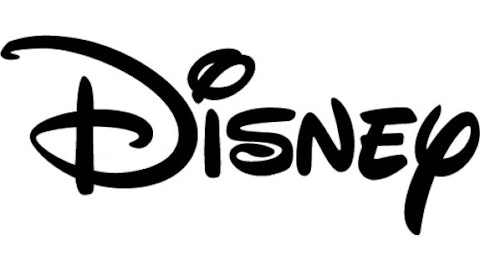The numbers are huge. That’s a differentiator for us certainly when it comes to competing with Netflix, for instance, which is the gold standard. But by leaning more into some of those films and while we improve the quality of them, gives us the ability to dial back a bit on some of the spending and investment in series. And that blend of spending between films and series, we believe, gives an opportunity to increase our margins and grow the business.
Alexia Quadrani: All right. Next question, please.
Operator: Our next question will come from Ben Swinburne with Morgan Stanley. You may now go ahead.
Benjamin Swinburne: Thanks. Good afternoon. I want to come back to the free cash flow commentary because that’s pretty interesting and new. And also ask you, Bob, about your US sports business and ESPN. So on cash flow, $8 billion of free cash flow, $6 billion of CapEx, getting the $14 billion of cash from operations. You haven’t done a number like that, I think, since 2018. So I’m just trying to understand if you think you can sustain and grow your company at that level of cash content spent. I think Kevin said 2025, because that certainly allows you to really grow free cash flow from a base that’s already higher than people were expecting in 2024. Hopefully, that made sense. And then on the sports side, Bob, people think about ESPN as a network facing cord cutting, et cetera.
You clearly have a vision there that you think can grow over time. Can you talk a little bit about how you think about growing the sports business? Do you think you can, between linear and digital and other ancillary services, sort of grow your sports business over time? Because that would be another area where you’d certainly outperform expectations. Thanks so much.
Robert Iger: I’ll take the question about ESPN first. Interesting, I just saw statistics. ESPN is the number one brand on TikTok. Not the number one sports brand, not the number one media brand, the number one brand with about 44 million followers, which is an incredible statistic. ESPN is a very popular, high demand — high in demand product in the United States, and unique, we believe, and we feel leaning into it is the smart thing to do because of its unique quality, how popular it is and how profitable it has been. We believe we have an opportunity there as we bring it in the direct-to-consumer direction. To strengthen our hand when we do that by partnering with either tech companies that can provide us with marketing technology support, customer acquisition help, or sports leagues that can provide us with more content.
It’s that simple. We’re quite — we are actually quite bullish about it. And frankly, if we were to just sit back and leave ESPN alone, kind of as part of the linear bundle, we know ultimately where that would bring us. It certainly wouldn’t bring us in a growth direction because of the — basically the continued decrease in multichannel subscribers. So this is a way to really buck that trend, continue to allow it to be part of the multichannel bundle, but also make it available on an [indiscernible] basis, basically taking a very popular product, in fact, and make it available and possibly strengthening it by doing what I described earlier. It’s that simple. And we think about the building blocks of the company, which right now we believe there are four.
One of them obviously is streaming overall. Another one we’ve talked about, which is Parks and Resorts and turbocharging that growth. The third I talked about earlier, which is returning the studio to basically the level of success that we became used to before the pandemic. And the fourth is turning ESPN into a preeminent digital sports platform. Kevin, you take the cash flow.
Kevin Lansberry: Yeah. With — Ben, with respect to cash flow, we do feel good about where we are ending up in 2024 from a content spend perspective. And when you take a look at how we’re getting to that year-over-year, lower content spend is clearly part of it. But continued growth and improvement of our underlying business is also a huge component of that, as is the annualized efficiency targets that we have all implemented. So those things are driving a significant amount of year-over-year improvement in our cash flow.
Alexia Quadrani: All right. Operator, next question, please.
Operator: Our next question will come from Jessica Reif Ehrlich with BofA Securities. You may now go head.
Jessica Reif Ehrlich: Yes, thank you. Excuse me. Thank you. Bob, I was wondering if you could give us your sort of holistic view on advertising and what’s going on. I mean, we know money is going into like retail, media networks and things like that, but how much can you as a company make up on AVOD versus what’s going on with linear? And maybe you can give us your view on what is going on with linear for you. And then on India, it’s been notably challenging market consistent money loser. Can you talk about how — your view of kind of ultimately where that winds up? Do you own it? Do you JV it? Do you exit the market?
Robert Iger: Jessica, first of all, in India, our linear business actually does quite well. It’s making money. But we know that other parts of that business are challenged for us and for others, and we are looking, I’ll call it expansively. I know I’ve said this before. It always gets me in trouble. But we’re considering our options there. We have an opportunity to strengthen our hand. It is, I think, now that maybe the most populous country in the world, or maybe just still second to China and about to pass them. We’d like to stay in that market. And — but we also are looking to see whether we can strengthen our hand, obviously, improve the bottom line. In terms of advertising, we are actually finding that linear is a little bit stronger than we had expected it would be.
It’s not back as much as we would like. It’s still challenged, but it’s not as bad as it had been. So we’ve seen some slight improvement. Actually, the tech sector is still somewhat weak. But in general, overall, advertising has improved. We’re finding, obviously, great demand for addressable advertising. I noted on an interview I did earlier that we’ve now put tools in place, or we’re using tools on Disney+ to provide advertisers with better targeting. They’re starting to work. And in general, sports has been very, very strong. So as we look at the advertising marketplace right now, while it’s not as strong as we would like it to be, it’s certainly not as bad as some people think it is. And it’s working for us. On AVOD, look, it’s very, very clear that the tools that the new platforms provide to advertisers are exactly what the advertisers are looking for.
Those platforms are an advertiser’s dream. And we know that the more data, the more detail, the more context, the more targeting we can provide, the better off we’ll be. Hulu had an extremely robust advertising engine. We actually — we’ve got one of the best in the business, if not the best. And so, actually, that combination of Hulu and Disney+ with some of the tools that we put in place, is going to give us the ability to have a blended CPM, grow engagement, grow advertising. So we’re quite bullish about our position, media-wise in an advertising marketplace.
Alexia Quadrani: Operator, next question, please.
Operator: Our next question will come from John Hodulik with UBS. You may now go ahead.
John Hodulik: Great, thanks. Maybe first, a follow up to Ben’s question. Is there an opportunity for ESPN to add local sports rights, given what’s happening to the RSN model, or potentially add sports rights to be distributed outside the US? That’s the first question. And then second question is, Warner Brothers basically made some news recently by licensing some of their — what would be considered some of their tentpole content, their DC Universe to Netflix. Is that something you think that Disney can do or can lean into, more — at least more of that — so than you’re doing now without diluting the Disney brand or the Disney+ growth prospects? Thanks.





